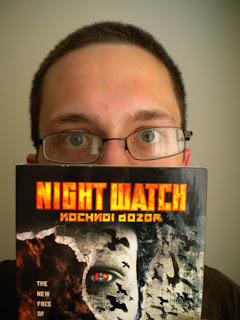
I wanted to put out one last blog before the semester closed, and I thought the easiest way would be to go to the FLMS in the Humanities Building. The folks there were not loaning out any more movies because today was the last day for students to return films. I asked one of my roommates if he had any suggestions and he told me about this movie called Kontroll and I figured I would search for it on the internet and give it a try.
Kontroll is a Hungarian movie directed by Nimród Antal about ticket inspectors that work on the Budapest Metro. The movie is meant to be funny and suspenseful at the same time as the main characters find themselves dealing with awkward and ridiculous situations yet come face to face with deadly scenarios. In one instance, a passenger gets fed up with a ticket inspector and they get into a fight that spirals out of control, and the ticket inspector kills the passenger. Immediately following that, the department officials order a psychiatric evaluation of the employees and everyone has something bizarre to say. One does not even say anything; he just starts playing with things on the psychiatrist’s desk. Another person starts a small fire during his meeting.
One of the immediate features I recognized about the movie’s cultural relativity was the kind of music that played in the background. There was a significant amount of the stereotypical European rock music that comes from the German-Slavic area that had me thinking Ramstein, but not nearly that heavy. The movie had a disclaimer at the beginning about the way that the real ticket inspectors work because they do not get very positive representations in the movie. Another unique part to the movie is that in Hungary people can ride on the subway for free if they are family of drivers. The main female character, the love interest, is the daughter of one of the drivers who turns out to be good friends with the main character.
An interesting thought on the movie is how it is about the metro system in Hungary, which is a subculture of its own. The movie showed a little bit about the perspective, not only of people in Hungary, but also people familiar with the subway. I never spent too much time in a large city with a subway and never had the opportunity to ride on one, and it is funny how I can come up with preconceived notions about the metro. Even in the US people have goofy subway stories. Mass transportation in developed countries has lead to some kind of global culture that was previously unheard of in human history.
Kontroll is a Hungarian movie directed by Nimród Antal about ticket inspectors that work on the Budapest Metro. The movie is meant to be funny and suspenseful at the same time as the main characters find themselves dealing with awkward and ridiculous situations yet come face to face with deadly scenarios. In one instance, a passenger gets fed up with a ticket inspector and they get into a fight that spirals out of control, and the ticket inspector kills the passenger. Immediately following that, the department officials order a psychiatric evaluation of the employees and everyone has something bizarre to say. One does not even say anything; he just starts playing with things on the psychiatrist’s desk. Another person starts a small fire during his meeting.
One of the immediate features I recognized about the movie’s cultural relativity was the kind of music that played in the background. There was a significant amount of the stereotypical European rock music that comes from the German-Slavic area that had me thinking Ramstein, but not nearly that heavy. The movie had a disclaimer at the beginning about the way that the real ticket inspectors work because they do not get very positive representations in the movie. Another unique part to the movie is that in Hungary people can ride on the subway for free if they are family of drivers. The main female character, the love interest, is the daughter of one of the drivers who turns out to be good friends with the main character.
An interesting thought on the movie is how it is about the metro system in Hungary, which is a subculture of its own. The movie showed a little bit about the perspective, not only of people in Hungary, but also people familiar with the subway. I never spent too much time in a large city with a subway and never had the opportunity to ride on one, and it is funny how I can come up with preconceived notions about the metro. Even in the US people have goofy subway stories. Mass transportation in developed countries has lead to some kind of global culture that was previously unheard of in human history.




